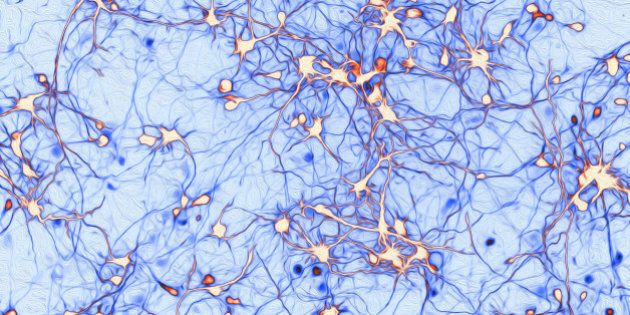
Ever wanted to see a really close up picture of an activated platelet attached to a malaria infected red blood cell? Yeah -- neither did we.
That was until we saw some of the pictures submitted to the 2015 National Health and Medical Research Council 'Science to Art' Awards -- which are, quite frankly, mind-boggling.
For those not familiar with the Awards, they are dedicated to recognising outstanding artworks which have arisen from research funded by NHMRC. That's right -- the gorgeous images you'll see below are also actually part of real-life medical research. (Is it just us or does anyone else feel lazy right now?)
The artworks range from close ups of a healing heart to colon crypts to something called CDX macrophages -- which may or may not mean anything to you.
But while you may not appreciate what "ominous glia" is referring to -- we reckon you'll appreciate the image it's referring to.
Enjoy.
Second runner up:

"Making new connections" by Ariadna Recasens.
First runner up:

"Egg-samining an intradermal injection" by Alexandra Depelsenaire.
Winner:

"In search of memory" by Victor Anggono.
And though the below didn't nab a place, we think they're still pretty amazing.

"CDX Macrophages" by Darren Brown.

"Activated platelet attached to a malaria infected red blood cell" by Andreas Greth.

"A hairy deviation" by Stefano Meliga.

"Prostate fireworks" by Roger Bourne.

"Finding connections" by David Manser and Nicholas Blair.

"All aboard the glial train" by Claire Hadrill.

"Controlling growth" by Ilaria Stefani.

"The healing heart" by Fabian Friedl.

"Illuminating the dark side of colon crypts to elucidate the secrets of inflammatory bowel diseases" by Fernando Souza-Fonseca-Guimaraes.

"HIV Filopodia" by Stuart Turville.

"Ominous Glia" by Edgar Dawkins.

"Painting with stem cells to repair the brain" by Christopher Turner.